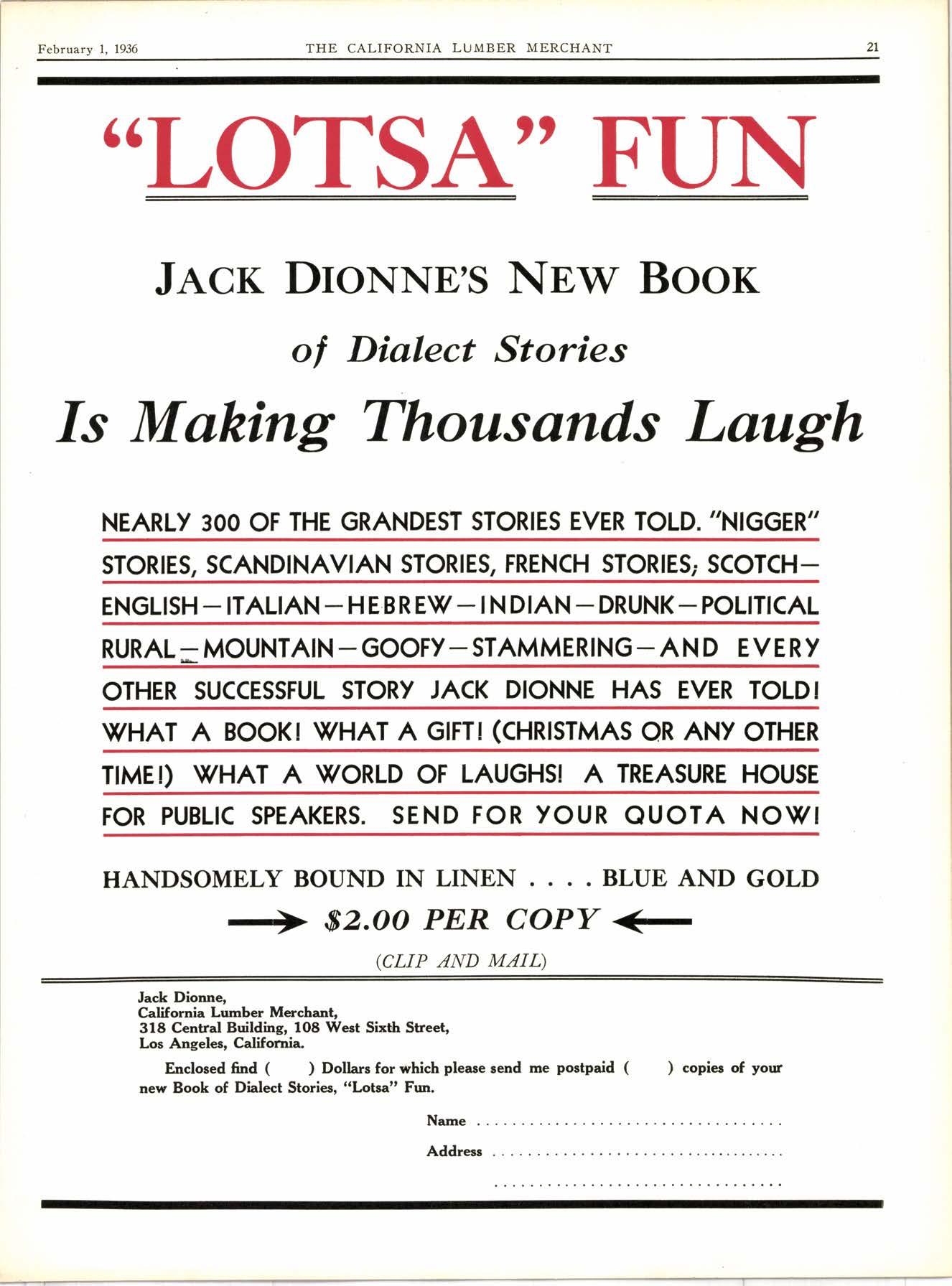
2 minute read
Celotex Launches Bis Merchandising Program
The largest merchandising and advertising program since 1929 was launched by The Celotex Corporation at the opening of its annual sales convention in New Orleans on January 3rd. More than 200 executives, salesmen and representatives of the company's two advertising agencies attended the six-day meeting at which the 1936 program was discussed.
Prime points of the Celotex program, announced by Harold Knapp, General Sales Manag'er, are:
1. A greater advertising campaign, both in general publications and homes, farm, architectural, building trades, restaurant, school, store, hospital, theater, church and business magazines.
2, Direct mail campaigns, which will run throughout the year, to architects, building contractors, plastering contractors, school and hospital boards and government purchasing agents.
3. A complete new library of more than 150 pieces of Celotex literature covering the uses of Celotex products in every field.
4. The company's army of field representatives, expanded with the gain in building activity last year, has been further augmented so that dealers may be served in a manner commensurate with the greater gains anticipated this year.
5. The traveling Celotex exhibits, which played such a large part in helping dealers capitalize on the 1935 market, will be broadened in scope and number this year to include, for the dealer's benefit, the promotion of all Celotex products.
6. The company is also undertaking a more intensive program of publicity, in line with the efforts of the Federal Housing Administration, to stimulate interest in new construction and in the repair and impl:ovement of existing structures.
"The total effect of the 1936 program," stated Mr. Knapp, "is to add power to the traditional Celotex merchandising policy, which has been in force since 1921-that our job is not finished when our products are delivered to our dealers, but only when they are sold to the ultimate consumer.
"To make this policy as effective as possible, the company has retained two advertising agencies, the United States Advertising Corporation to handle general advertising, and the Hays MacFarland Company as advertising, sales and merchandising counsel."
The strong position of The Celotex Corporation, which makes possible the carrying out of the enlarged 1936 program, was discussed by President Bror G. Dahlberg, who forecast great advances in building and g{eater profit opportunities for Celotex dealers.
"The first goal of the Celotex program," according to Mr. Knapp, "will be the new home market which, after a sixyear decline has turned upward and promises a rapid rise through 1936.
"The vast dimensions of this market are indicated by the statement made at the convention by Ward Canaday, head of the United States Advertising Corporation, that the erection of 700,000 homes a year for 10 years is needed to meet the housing need.
"A greater effort will be made to secure for dealers the maximum return from the modernizing market, both in commercial buildings and homes.
Impovements in the company's products, new products and the expansion of uses and markets for Celotex, which is entailing the expenditure of three-quarters of a million dollars on the company's plant at Marrero, La., were announced by T. B. Munroe, Vice President in charge of research and development.
Among the new products now available for distribution by Celotex dealers is Flexcell, a type of specially treated Celotex used for expansion joints in pavements, sidewalks and roofs, and for similar purposes. Since its introduction, Flexcell has been used on many important jobs, including the $77,000,000 San Francisco-Oakland bridge and on Rockefeller Center job.










